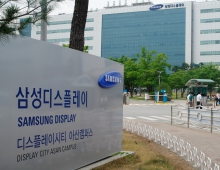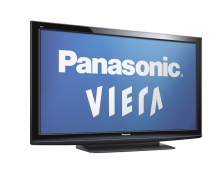
Shipment of LCD Desktop Monitors Rise 7% in Q1 2005
Worldwide LCD desktop monitor shipments grew on track with previous predictions, rising 7% Q/Q to 22.7M units in Q1 2005, according to a report from DisplaySearch.
The growth represents a unit shipment growth of 44% Y/Y, continuing the 26% Q/Q growth seen in Q4 2004 brought on mainly by the aggressive street-level price points which began to hit the market in the fall of 2004.
For the quarter, the three most popular LCD monitor sizes continued to carry average retail price points of US$199 for 15", US$299 for 17" and US$399 for 19", which increased penetration of LCD-based desktop solutions to reach a record high penetration rate of 63.6% of the total desktop monitor marketplace in Q1 2005. The increased demand that yielded record revenues of US$8.2B in Q4 2004 was not enough to overcome the continued aggressive industry price points, so revenues dropped 5% to US$7.8B in Q1 2005.
The aggressive price points for LCD monitors seen in Q1 continued to erode the share of CRT monitor shipments for desktop computing worldwide, resulting in CRT monitor shipments falling 21% Q/Q to 13.2M units. As more PC companies move away from bundling CRT products in their entry-level PC bundles, CRT monitor market is forecast to fall even faster than previously expected.
Europe, Middle East and Africa (EMEA) was the largest market for LCD monitor shipments in Q1 2005 with 41.0% of the world's shipments going into this region, slightly down from 43.7% in Q4 2004. The North America market remained as the second region with 31.6% of worldwide shipments.
Dell was the worldwide leader in the shipments of desktop LCD monitors in Q1 2005, with a 20.2% worldwide market share. Companies after Dell in worldwide shipments were Samsung, HP, Acer and LGE. Among the top ten, Acer showed the strongest worldwide Q/Q growth with shipments up 13.7% Q/Q.
Dell continued to hold the top positions in Japan, North America and Latin America. Dell has almost a 40% market share in North America, but Acer grew a remarkable 46.4% Q/Q, increasing its market share to 5.1%. Dell's dominance in the LCD monitor market is becoming evident in EMEA as well, growing 16.5% Q/Q to an 11.3% share. Samsung held the dominant position in the AP (Asia Pacific) region with a 21.6% market share, while Lenovo held the top position in China with a 14.2% share.
New desktop monitor sizes from 19" wide to 24" wide continued to emerge, but the three most popular sizes -- 15", 17" and 19" -- accounted for 96.7% of all desktop monitors shipped in Q1. Market share of 15" LCD monitors was 19.7%, even though shipments were down 20.3% Q/Q. Shipments of 17" grew 11.1% Q/Q to 58.4% market share, and 19" grew a significant 45.2% Q/Q to capture 18.3% share in Q1 2005.
With sales demand still strong in Q1 2005 but revenues down due to the aggressive street-level price points, pricing for the LCD monitor panel components began to rise in Q1. The effect of these component level price increases is already starting to impact the street prices of end-market LCD monitors, which are now on the rise. Increases in street-level pricing usually slow the growth of the LCD monitor market especially in seasonally weak periods, a market condition seen as recently as Q2 2004. If the unprecedented amount of planned additional LCD production capacity continues to ramp, however, these street-level price increases may not last for long, thus allowing for LCD monitor price points to realign with the market to allow for continued sales growth throughout the rest of 2005.
For the quarter, the three most popular LCD monitor sizes continued to carry average retail price points of US$199 for 15", US$299 for 17" and US$399 for 19", which increased penetration of LCD-based desktop solutions to reach a record high penetration rate of 63.6% of the total desktop monitor marketplace in Q1 2005. The increased demand that yielded record revenues of US$8.2B in Q4 2004 was not enough to overcome the continued aggressive industry price points, so revenues dropped 5% to US$7.8B in Q1 2005.
The aggressive price points for LCD monitors seen in Q1 continued to erode the share of CRT monitor shipments for desktop computing worldwide, resulting in CRT monitor shipments falling 21% Q/Q to 13.2M units. As more PC companies move away from bundling CRT products in their entry-level PC bundles, CRT monitor market is forecast to fall even faster than previously expected.
Europe, Middle East and Africa (EMEA) was the largest market for LCD monitor shipments in Q1 2005 with 41.0% of the world's shipments going into this region, slightly down from 43.7% in Q4 2004. The North America market remained as the second region with 31.6% of worldwide shipments.
Dell was the worldwide leader in the shipments of desktop LCD monitors in Q1 2005, with a 20.2% worldwide market share. Companies after Dell in worldwide shipments were Samsung, HP, Acer and LGE. Among the top ten, Acer showed the strongest worldwide Q/Q growth with shipments up 13.7% Q/Q.
Dell continued to hold the top positions in Japan, North America and Latin America. Dell has almost a 40% market share in North America, but Acer grew a remarkable 46.4% Q/Q, increasing its market share to 5.1%. Dell's dominance in the LCD monitor market is becoming evident in EMEA as well, growing 16.5% Q/Q to an 11.3% share. Samsung held the dominant position in the AP (Asia Pacific) region with a 21.6% market share, while Lenovo held the top position in China with a 14.2% share.
New desktop monitor sizes from 19" wide to 24" wide continued to emerge, but the three most popular sizes -- 15", 17" and 19" -- accounted for 96.7% of all desktop monitors shipped in Q1. Market share of 15" LCD monitors was 19.7%, even though shipments were down 20.3% Q/Q. Shipments of 17" grew 11.1% Q/Q to 58.4% market share, and 19" grew a significant 45.2% Q/Q to capture 18.3% share in Q1 2005.
With sales demand still strong in Q1 2005 but revenues down due to the aggressive street-level price points, pricing for the LCD monitor panel components began to rise in Q1. The effect of these component level price increases is already starting to impact the street prices of end-market LCD monitors, which are now on the rise. Increases in street-level pricing usually slow the growth of the LCD monitor market especially in seasonally weak periods, a market condition seen as recently as Q2 2004. If the unprecedented amount of planned additional LCD production capacity continues to ramp, however, these street-level price increases may not last for long, thus allowing for LCD monitor price points to realign with the market to allow for continued sales growth throughout the rest of 2005.





















